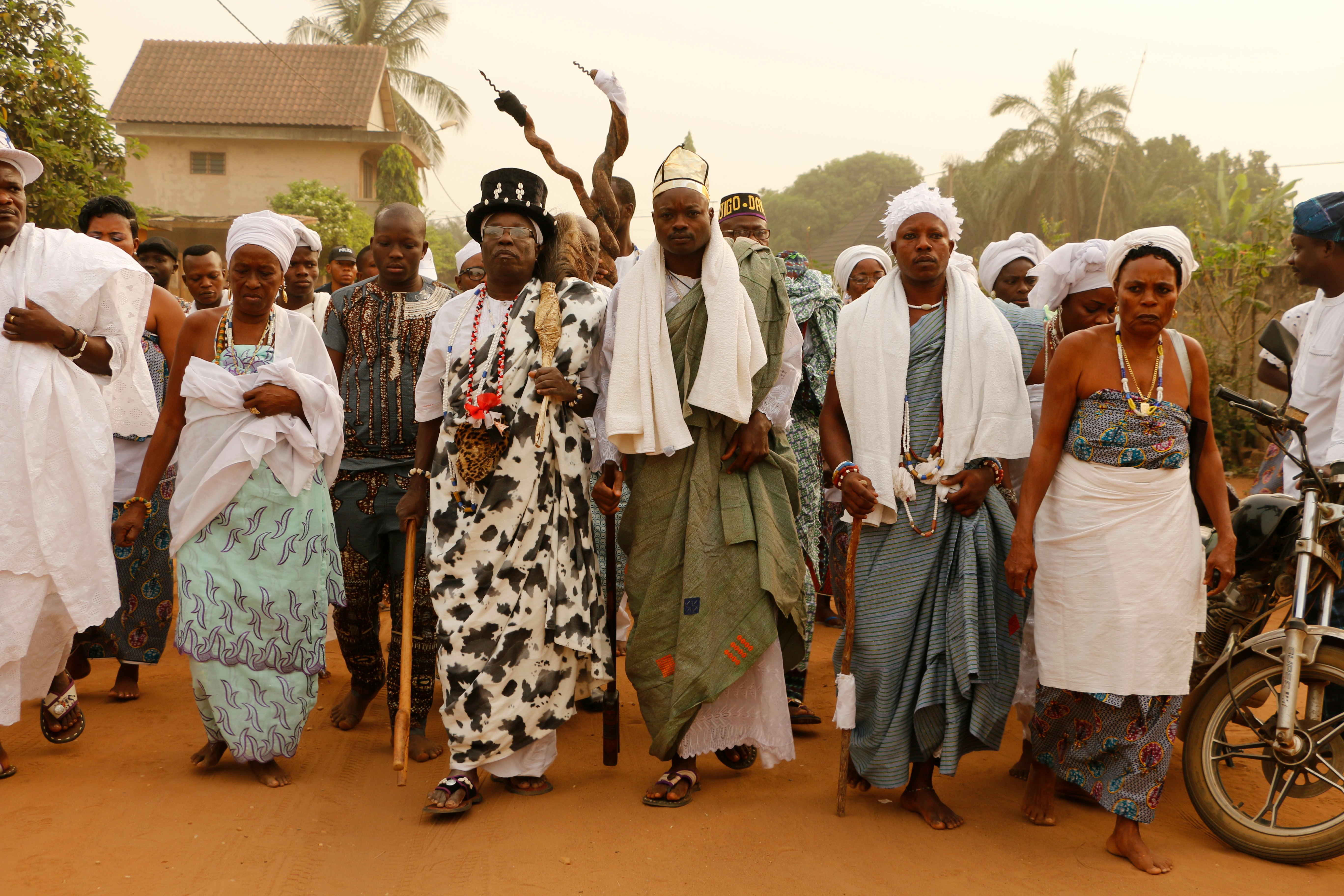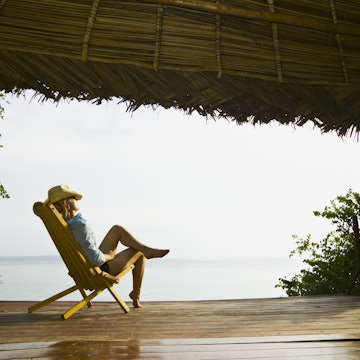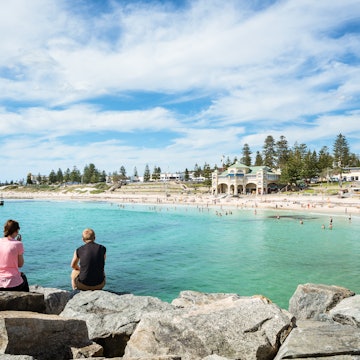

The lake village of Ganvie has a fascinating history and culture © Anton_Ivanov / Shutterstock
Benin is one of the most unique and historically significant destinations in West Africa.
It played a fundamental role in the transatlantic trade of enslaved people, while also being the birthplace of the Vodou religion. These attributes have created a complex and rich history that constitutes the fabric of the nation.
It may be a small country with only a few cities but Benin offers the abundant Atlantic Ocean alongside serene beaches, marvelous wildlife, cultural museums and traditional customs.
A trip here is truly worth your while – Benin's burgeoning status as an enticing travel destination means this is your chance to discover its wonderful places to visit before the crowds arrive. Here are seven of our favorite places to go in Benin.
1. Ganvie
Best place to go for a boat tour
The largest lake village in Africa is a popular and spectacular place to visit when exploring Benin. Ganvie has a population of 20,000 people located on Lake Nokoue, a 16,000-hectare body of water close to Cotonou. This village has a treacherous and tyrannical history that stems back to the fifteenth century when the Tofinu people sought refuge on Lake Nokoue's islands to avoid being stolen into a life of enslavement and servitude.
The Tofinu tribe fled from Fon warriors who were infamously known to sell Africans to European merchants during the transatlantic trade of enslaved people. Ganvie's villagers are called the "watermen" because they once used the shallow waters of the lake for shelter. Lake Nokoue is also a beautiful destination for birdwatching, home to the White Crested Heron and African Openbill. The main income sources of the "watermen" come from tourism and fishing.
Planning tip: Organize a boat tour with a local operator who will also act as your guide. They'll explain the floating markets, fishing techniques and different lake villages. The docks are 45 minutes away from Cotonou, so spend a full day exploring Ganvie.
2. Abomey
Best historical site in Benin
This was once the capital of Benin, which was then known as Dahomey. Abomey was an ancient West African Kingdom that existed between 1600 and 1814. It was revered for its military prowess and reached its pinnacle as an empire in the 18th and 19th centuries.
The highlight of your visit will be the Abomey Palaces, which are a Unesco World Heritage Site and one of the best places to visit in Benin. Unfortunately, most of the palaces have been destroyed but you can learn about the fascinating history of kings who once ruled over this land.
Planning tip: Make sure you visit Abomey with an experienced guide who will show you around the area. Don't venture out on your own because you won't be able to understand the historical significance of the site without a local's insight.

3. Ouidah
Best city to learn about Vodou
If you're a history lover or have a fascination with the occult, Ouidah should be at the top of your itinerary. The city was invaded by the French at the end of the nineteenth century when the Dahomey kingdom was declining. The French waged wars within the kingdom and eventually colonized it in 1894 after a two-year campaign of violence.
Despite this turbulent history, Ouidah is a relaxed getaway, just 40 km (25 miles) away from the bustling city of Cotonou. This city is the birthplace of Vodou – it's the official religion of Ouidah and is also practiced in Togo, Haiti, Brazil, Cuba and New Orleans. This is the best place in the world to learn about the history and beliefs of Vodou in all its glory; there's an Ouidah Museum of History and a Vodou Public Holiday that is celebrated by all Beninese.
Planning tip: This city is out of the ordinary and it's important that you travel to Ouidah with an open mind. You may see things that seem strange or unfamiliar but it's important not to judge and respect the local culture.
4. Cotonou
Best city for nightlife
As the largest city in Benin, Cotonou is busy, vibrant, and filled with an abundance of ethnic groups that include the country's main tribes – the Adja, the Bariba, the Fon, the Yoruba and the Fula, who make up over four-fifths of Benin's population. Cotonou is filled with an African magnetism that pulls travelers from different parts of the world into its city limits.
If Benin is the first country you visit in Africa, Cotonou can be a sensory overload. Take a break by exploring Pendjari National Park, a premier wilderness for wild animals in West Africa. You can also relax on Cotonou's pristine beaches, which are filled with golden sand and pretty palm trees. If you'd like to experience something a little different than the standard tourist destination, pay a visit to the Fetish Market – a marketplace that sells dead animals to be used in Vodou celebrations.
Planning tip: The best way to get to Cotonou is by road. You can either catch a bus from Porto Novo, Lagos, Lome and Accra or hire a car with a driver.
5. Porto Novo
Best city to shop for curios
This is the capital city of Benin and the former capital of the French colony of Dahomey. It has a population of 250,000 people and is more moderate than Cotonou. The Portuguese influence can still be felt and observed in Porto Novo. They came to Benin in the fifteenth century when the Portuguese started trading enslaved people, brass, copper, cloth and pepper.
Benin copper bracelets were more prized than standard copper bracelets and millions of brass products from Benin were produced and circulated in European countries. While visiting Porto Novo, make sure you visit the Museum of Porto Novo Kings, the Ethnographic Museum of Porto Novo, and the Royal Palace and Gardens.
Planning tip: Visit Porto Novo right after visiting Cotonou. It's a lovely drive and you'll be able to see more of Benin's beautiful countryside.

6. Grand Popo
Best beach city in Benin
Grand Popo is a friendly beach town with a tragic history. In the sixteenth century, enslaved people were gathered here and loaded onto canoes that departed for Ouidah. They were then packed onto ships headed for the Americas, never to be seen again by their loved ones.
Today, the town is full of friendly faces and has an authentic African beauty to it. Located an hour away from Cotonou, Grand Popo gives visitors the chance to unwind, swim and sunbathe. You can also take a stroll to Mono River, which neighbors Grand Popo – a hidden gem where you'll find pretty mangroves and isolated beaches.
Planning tip: Visit Grand Popo as the last destination of your Benin trip. It's a great place to relax and reminisce about the amazing trip you've just had.
7. Natitingou
Best city to go learn about local culture
Natitingou is a small city with a strong culture and heritage. To learn more about the country’s unique tribes, visit the Musée Régional de Natitingou in Northern Benin and find out about the Somba people's traditions, arts and crafts, and ancient rituals. The museum is located inside a former French colonial office.
When you arrive, you’ll see a statue of a local hero named Keba in the middle of a roundabout. Ask a local tour guide to tell you the riveting tale of this revered warrior who led a fearless fight against colonialism. This is also one of the best places in West Africa to see Shea Butter being made.
Planning tip: This city is a history lover's dream – spend a couple of days in Natitingou so that you can learn the local culture firsthand.












